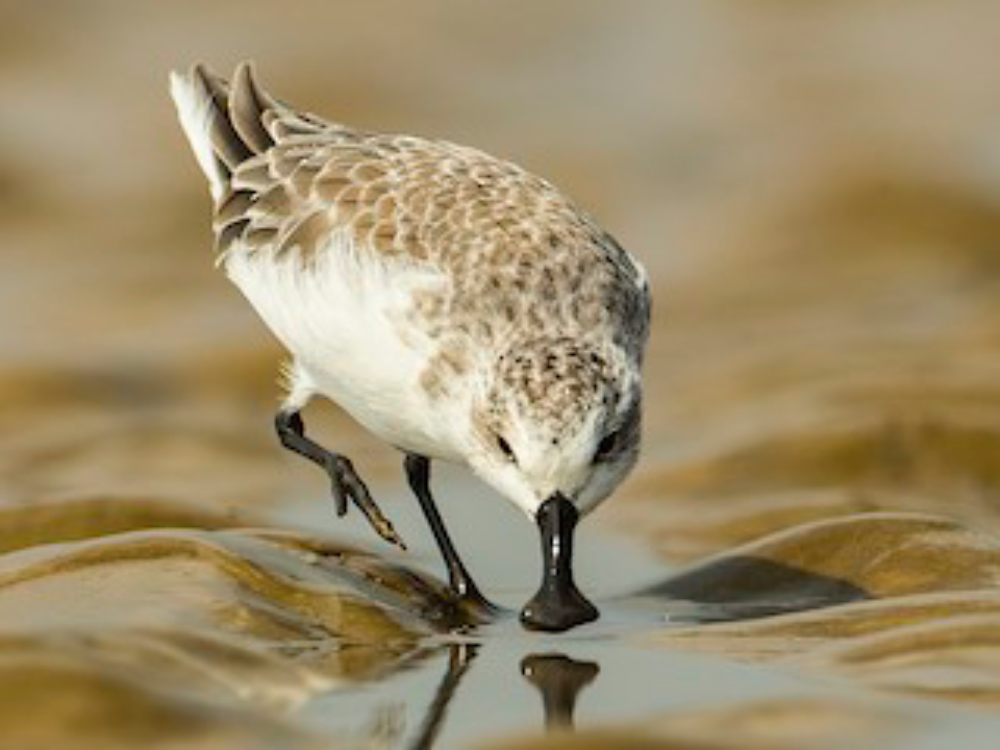The Spoon-billed Sandpiper (Calidris pygmaea) is one of the most captivating and critically endangered shorebirds on the planet. Known for its unique spatula-shaped bill, this diminutive bird has captured the attention of ornithologists, conservationists, and bird enthusiasts worldwide. However, its charm is overshadowed by its precarious status, as it faces a multitude of threats across its migratory range. This article delves into the fascinating world of the Spoon-billed Sandpiper, exploring its biology, migratory patterns, threats, and the conservation efforts aimed at preventing its extinction.
Biological Characteristics of the Spoon-billed Sandpiper
The Spoon-billed Sandpiper is a small wader, measuring about 14–16 cm (5.5–6.3 inches) in length, with a wingspan of 30–34 cm (12–13 inches). Its most distinctive feature is its bill, which is flattened into a spoon-like shape at the tip. This unique adaptation is thought to help it forage in the mudflats and wetlands where it searches for food. The bird’s plumage varies with the seasons: during the breeding season, adults display a striking combination of reddish-brown and black on their upperparts, with white underparts, while in the non-breeding season, they adopt a more subdued grayish-brown coloration.
Habitat and Breeding
The Spoon-billed Sandpiper breeds in the coastal tundra of northeastern Russia, particularly in the Chukotka and northern Kamchatka regions. Its breeding habitat consists of low-lying coastal areas with abundant sedge and moss. Nesting usually begins in June, when the snow has melted and the tundra is accessible. The birds build their nests on the ground, well-hidden among the vegetation to protect them from predators.
During the breeding season, the male performs elaborate courtship displays, including aerial maneuvers and vocalizations, to attract a mate. Once paired, both parents share the responsibility of incubating the eggs, which typically number four per clutch. After hatching, the chicks are precocial, meaning they are relatively mature and mobile shortly after birth, but they still rely on their parents for warmth and protection until they can fend for themselves.
Migration and Wintering
The migration of the Spoon-billed Sandpiper is an epic journey, spanning thousands of kilometers. After the breeding season, these birds undertake a southward migration to their wintering grounds in Southeast Asia. Key stopover sites along their migratory route include the Yellow Sea region, where they rest and refuel in the intertidal mudflats of China and the Korean Peninsula.
Their wintering habitats are spread across coastal regions in countries such as Bangladesh, Myanmar, Thailand, and Vietnam. Here, they inhabit tidal flats, estuaries, and mangroves, where they forage for small invertebrates. The migration is perilous, with many threats along the way, from habitat destruction to hunting.
Threats and Challenges
The Spoon-billed Sandpiper faces a multitude of threats that have contributed to its dramatic decline in numbers. Chief among these are habitat loss and degradation. Coastal development, land reclamation, and pollution have led to the destruction of vital stopover and wintering sites. The intertidal zones of the Yellow Sea, for instance, have seen significant loss due to industrial expansion and infrastructure projects.
Additionally, climate change poses a significant threat by altering the coastal ecosystems on which these birds depend. Rising sea levels and changing weather patterns can disrupt their breeding and feeding habitats, further stressing the already vulnerable populations.
Another major threat is hunting, particularly in Southeast Asia, where the birds are sometimes caught in mist nets intended for other species. Although international efforts have been made to reduce hunting pressure, it remains a significant concern.
Conservation Efforts for Spoon-billed Sandpiper
Conservationists around the world have rallied to save the Spoon-billed Sandpiper from extinction. Efforts are multifaceted, involving habitat protection, research, captive breeding, and community engagement.
One of the critical strategies has been the identification and protection of key habitats along the bird’s migratory route. International collaborations, such as the East Asian-Australasian Flyway Partnership (EAAFP), work to safeguard crucial stopover sites and wintering grounds. Protected areas have been established, and efforts are ongoing to manage and restore degraded habitats.
Captive breeding programs have also been initiated to create a safety net population. The Wildfowl & Wetlands Trust (WWT) and Birds Russia have successfully bred Spoon-billed Sandpipers in captivity, with some individuals being reintroduced into the wild to bolster the existing population.
Research plays a vital role in conservation, providing essential data on the bird’s ecology, migration patterns, and threats. Satellite tracking and field studies help scientists understand the challenges the birds face and identify critical areas for conservation action.
Community engagement and education are also crucial. Local communities in key areas are being involved in conservation efforts, with initiatives to raise awareness and reduce hunting. Ecotourism is promoted as an alternative source of income, encouraging local populations to protect rather than exploit these birds.
Conclusion
The Spoon-billed Sandpiper, with its distinctive spoon-shaped bill and incredible migratory journey, symbolizes both the beauty and fragility of our natural world. While the challenges it faces are immense, the concerted efforts of scientists, conservationists, governments, and local communities offer a beacon of hope. By continuing to work together and implement effective conservation strategies, we can strive to ensure that future generations have the chance to marvel at this unique and enchanting bird. The story of the Spoon-billed Sandpiper is not just about a single species; it is a testament to the broader struggle to preserve our planet’s biodiversity in the face of relentless change.










